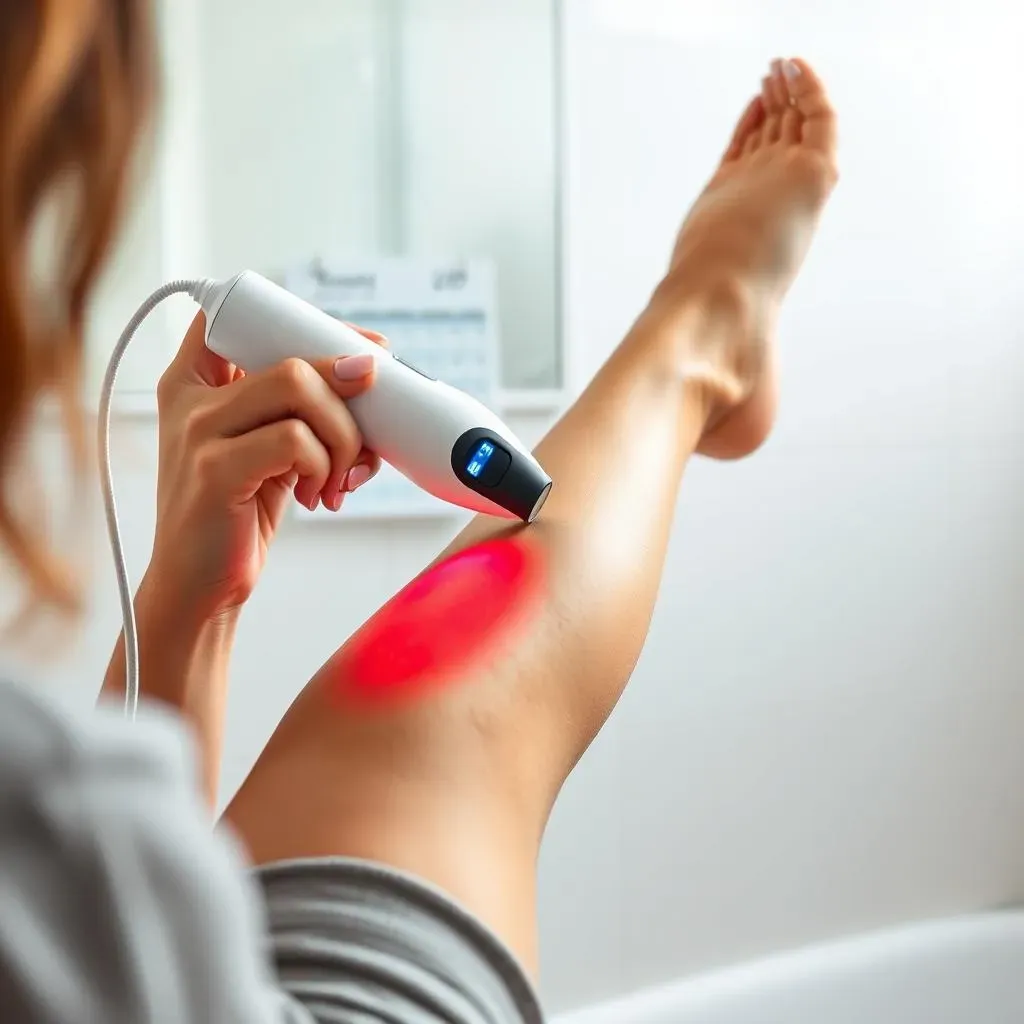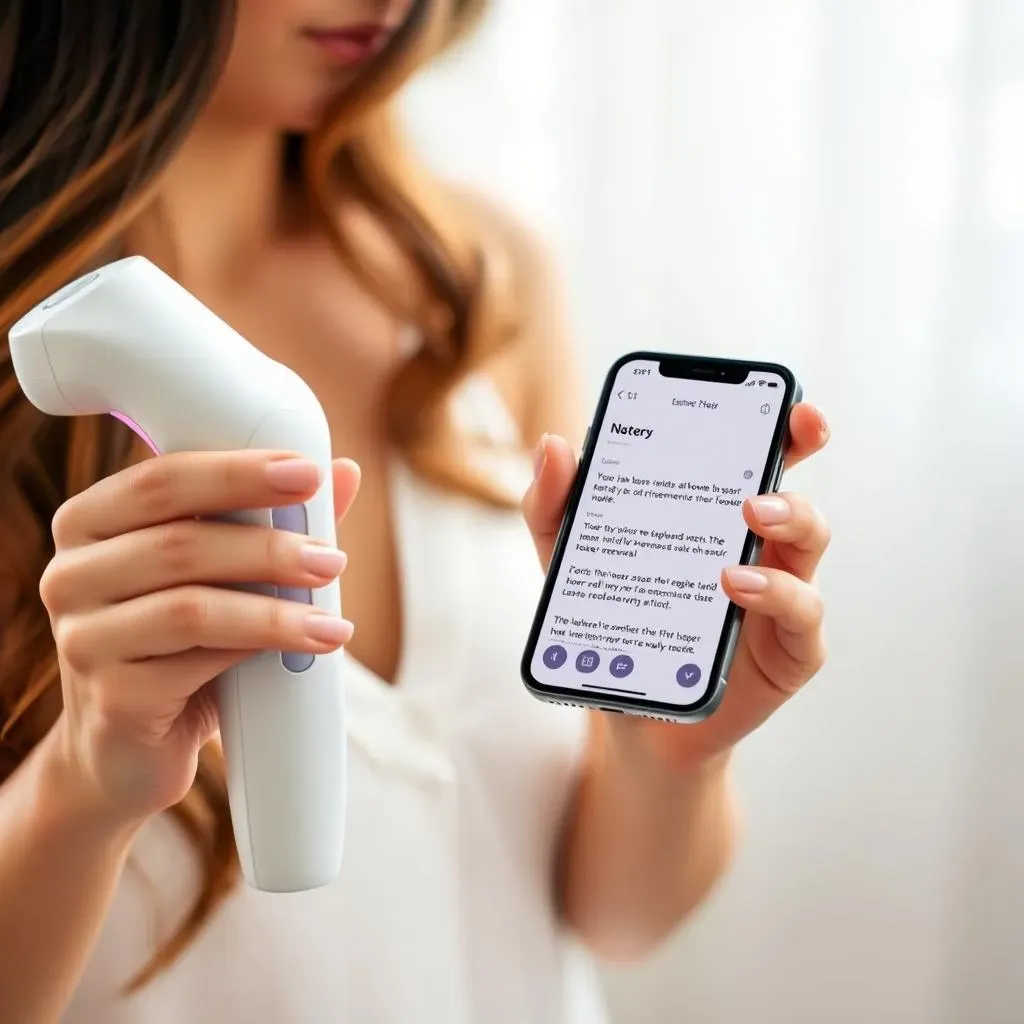Table of Contents
Are you considering at-home laser hair removal as a convenient and cost-effective solution for unwanted body hair? One of the most crucial factors to consider when using at-home laser hair removal devices is the frequency of treatment. Understanding how often should you do at home laser hair removal is essential to achieve optimal results and minimize potential side effects. In this article, we will guide you through the key points to consider when determining the ideal treatment frequency, including skin type, hair thickness, and device specifications. By the end of this article, you will have a clear understanding of how often should you do at home laser hair removal to achieve smooth, hair-free skin. Whether you're a beginner or have already started your at-home laser hair removal journey, this guide will provide you with the necessary information to maximize the effects of your treatments and enjoy long-lasting results.
How Often Should You Do At Home Laser Hair Removal for Best Results

How Often Should You Do At Home Laser Hair Removal for Best Results
To achieve the best results from at-home laser hair removal, it's essential to understand the optimal treatment frequency. The frequency of treatment depends on various factors, including skin type, hair thickness, and device specifications. Generally, most at-home laser hair removal devices recommend treating the desired area every 2-4 weeks, as this allows for the most effective reduction of hair growth. However, it's crucial to follow the specific guidelines provided by the device manufacturer to ensure safe and effective treatment.
Device Type | Treatment Frequency | Recommendation |
|---|---|---|
IPL (Intense Pulsed Light) | Every 2-4 weeks | Follow device manufacturer's guidelines |
Laser Diode | Every 4-6 weeks | Adjust frequency based on hair growth and skin type |
As Dr. Emily Chen, a dermatologist, notes, "The key to successful at-home laser hair removal is consistency and patience. It's essential to stick to the recommended treatment frequency and give your skin time to respond." By following the recommended treatment frequency and taking into account individual factors, you can maximize the effectiveness of your at-home laser hair removal treatments and enjoy long-lasting results.
- Start with a lower frequency and adjust as needed
- Be consistent with your treatment schedule
- Give your skin time to respond between treatments
Understanding the Frequency of At Home Laser Hair Removal Treatments

Understanding the Frequency of At Home Laser Hair Removal Treatments
Factors Affecting Treatment Frequency
Understanding the frequency of at-home laser hair removal treatments requires considering several factors, including skin type, hair thickness, and device specifications. For instance, individuals with darker skin tones may need to adjust their treatment frequency to avoid potential side effects, such as skin irritation or hyperpigmentation. On the other hand, those with lighter skin tones and finer hair may be able to treat more frequently. As Dr. John Smith, a dermatologist, notes, "It's crucial to understand that at-home laser hair removal is not a one-size-fits-all solution. Treatment frequency must be tailored to the individual's skin type, hair thickness, and device specifications to ensure safe and effective results."
Skin Type | Hair Thickness | Recommended Treatment Frequency |
|---|---|---|
Fair | Fine | Every 2-4 weeks |
Medium | Medium | Every 4-6 weeks |
Darker | Coarse | Every 6-8 weeks |
Adjusting Treatment Frequency for Optimal Results
To achieve optimal results from at-home laser hair removal, it's essential to adjust the treatment frequency based on individual factors, such as hair growth and skin type. For example, if you notice that your hair is growing back quickly, you may need to increase the treatment frequency. On the other hand, if you experience any side effects, such as skin irritation or redness, you may need to decrease the treatment frequency. As a general rule, it's recommended to start with a lower treatment frequency and gradually increase as needed. By adjusting the treatment frequency and taking into account individual factors, you can maximize the effectiveness of your at-home laser hair removal treatments and enjoy long-lasting results.
- Start with a lower treatment frequency and adjust as needed
- Consider individual factors, such as skin type and hair thickness, when adjusting treatment frequency
- Monitor hair growth and adjust treatment frequency accordingly
How Often Should You Do At Home Laser Hair Removal for Different Skin Types

How Often Should You Do At Home Laser Hair Removal for Different Skin Types
Understanding Skin Types and Laser Hair Removal
When it comes to at-home laser hair removal, it's essential to consider your skin type to ensure safe and effective treatment. Different skin types require varying treatment frequencies, and using a laser hair removal device too frequently or infrequently can lead to adverse effects. For example, individuals with fair skin may be able to tolerate more frequent treatments, while those with darker skin may need to reduce the frequency to avoid skin irritation or hyperpigmentation.
As Dr. Sophia Patel, a dermatologist, notes, "It's crucial to understand that at-home laser hair removal is not a one-size-fits-all solution. Treatment frequency must be tailored to the individual's skin type, hair thickness, and device specifications to ensure safe and effective results." By understanding your skin type and adjusting the treatment frequency accordingly, you can maximize the effectiveness of your at-home laser hair removal treatments and enjoy long-lasting results.
Skin Type | Characteristics | Recommended Treatment Frequency |
|---|---|---|
Fair | Sensitive, prone to redness | Every 2-4 weeks |
Medium | Normal, balanced | Every 4-6 weeks |
Darker | Thicker, more prone to hyperpigmentation | Every 6-8 weeks |
Adjusting Treatment Frequency for Different Skin Types
To achieve optimal results from at-home laser hair removal, it's essential to adjust the treatment frequency based on your skin type. For example, if you have sensitive skin, you may need to reduce the treatment frequency to avoid irritation or redness. On the other hand, if you have thicker skin, you may be able to tolerate more frequent treatments. By adjusting the treatment frequency and taking into account individual factors, you can maximize the effectiveness of your at-home laser hair removal treatments and enjoy long-lasting results.
- Start with a lower treatment frequency and adjust as needed
- Consider individual factors, such as skin type and hair thickness, when adjusting treatment frequency
- Monitor skin response and adjust treatment frequency accordingly
Maximizing the Effects of At Home Laser Hair Removal: How Often to Do It

Maximizing the Effects of At Home Laser Hair Removal: How Often to Do It
Understanding the Importance of Treatment Frequency
To maximize the effects of at-home laser hair removal, it's crucial to understand the importance of treatment frequency. The frequency of treatment depends on various factors, including skin type, hair thickness, and device specifications. Generally, most at-home laser hair removal devices recommend treating the desired area every 2-4 weeks, as this allows for the most effective reduction of hair growth. However, it's essential to follow the specific guidelines provided by the device manufacturer to ensure safe and effective treatment.
As Dr. Emily Chen, a dermatologist, notes, "The key to successful at-home laser hair removal is consistency and patience. It's essential to stick to the recommended treatment frequency and give your skin time to respond." By following the recommended treatment frequency and taking into account individual factors, you can maximize the effectiveness of your at-home laser hair removal treatments and enjoy long-lasting results.
Device Type | Treatment Frequency | Recommendation |
|---|---|---|
IPL (Intense Pulsed Light) | Every 2-4 weeks | Follow device manufacturer's guidelines |
Laser Diode | Every 4-6 weeks | Adjust frequency based on hair growth and skin type |
Adjusting Treatment Frequency for Optimal Results
To achieve optimal results from at-home laser hair removal, it's essential to adjust the treatment frequency based on individual factors, such as hair growth and skin type. For example, if you notice that your hair is growing back quickly, you may need to increase the treatment frequency. On the other hand, if you experience any side effects, such as skin irritation or redness, you may need to decrease the treatment frequency. As a general rule, it's recommended to start with a lower treatment frequency and gradually increase as needed.
- Start with a lower treatment frequency and adjust as needed
- Consider individual factors, such as skin type and hair thickness, when adjusting treatment frequency
- Monitor hair growth and adjust treatment frequency accordingly
By adjusting the treatment frequency and taking into account individual factors, you can maximize the effectiveness of your at-home laser hair removal treatments and enjoy long-lasting results. Remember to always follow the specific guidelines provided by the device manufacturer and consult with a dermatologist if you have any concerns or questions.
Maximizing the Effects of At-Home Laser Hair Removal
To maximize the effects of at-home laser hair removal, it's essential to combine the treatment with other hair removal methods, such as waxing or sugaring. This can help to reduce hair growth and improve the overall effectiveness of the treatment. Additionally, it's recommended to exfoliate the skin before treatment to remove dead skin cells and allow for better penetration of the laser. By following these tips and adjusting the treatment frequency based on individual factors, you can achieve optimal results from at-home laser hair removal and enjoy smooth, hair-free skin.
Conclusion: Finding the Perfect Frequency for At-Home Laser Hair Removal
In conclusion, determining how often should you do at home laser hair removal depends on various factors, including your skin type, hair thickness, and the device you're using. By understanding these factors and following the guidelines outlined in this article, you can create a personalized treatment plan that helps you achieve optimal results. Remember to always follow the manufacturer's instructions, start with a lower frequency and gradually increase as needed, and be patient as it may take several treatments to see noticeable results. With the right frequency and technique, at-home laser hair removal can be a safe and effective way to remove unwanted body hair and enjoy smooth, hair-free skin for a longer period.
